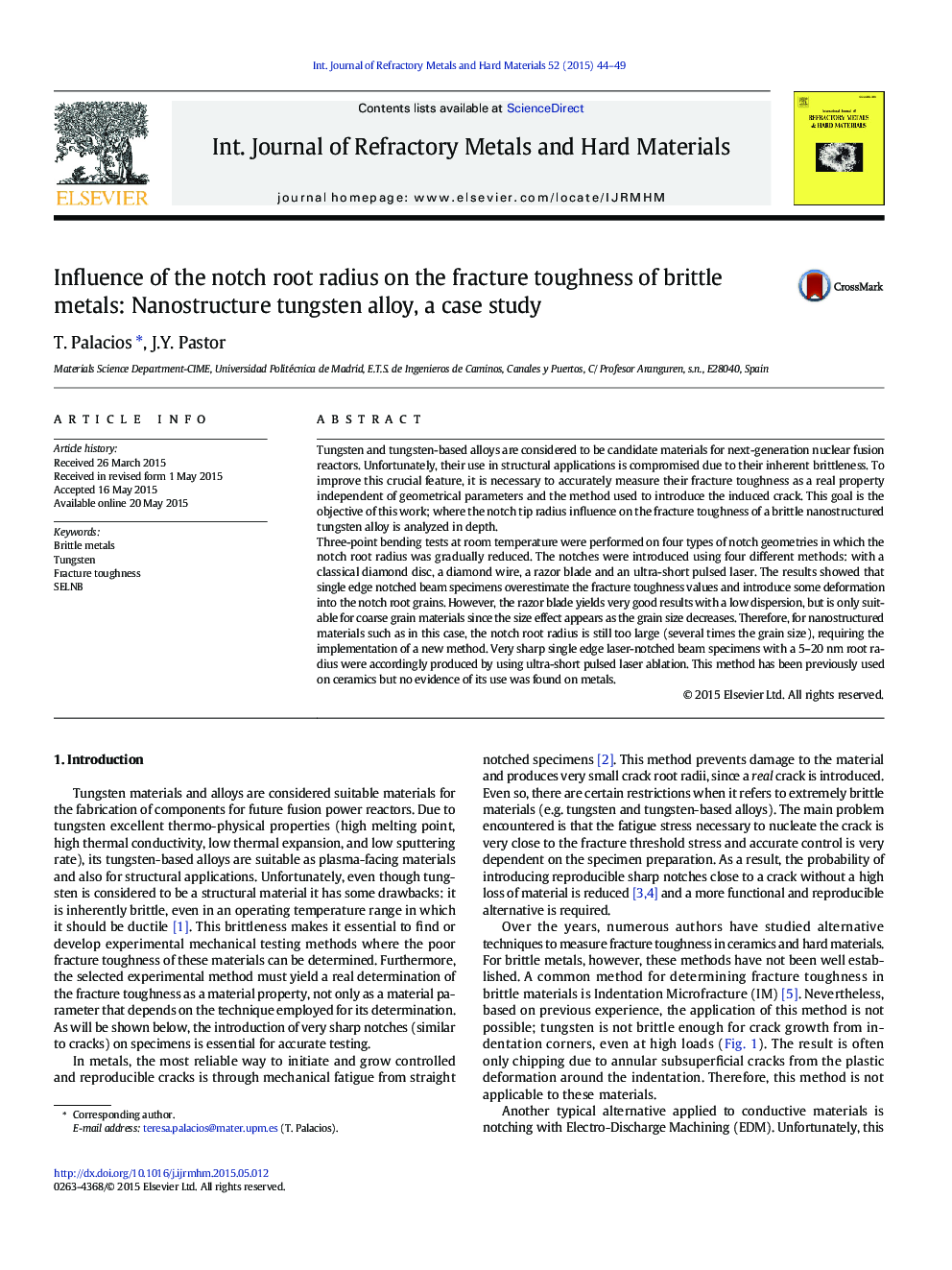| کد مقاله | کد نشریه | سال انتشار | مقاله انگلیسی | نسخه تمام متن |
|---|---|---|---|---|
| 1602661 | 1515968 | 2015 | 6 صفحه PDF | دانلود رایگان |
• The influence of the notch tip radius on the fracture toughness of a brittle nanostructured tungsten alloy was analyzed.
• SENB specimens show a rough evaluation of the fracture toughness.
• SEVNB specimens provide more accurate results but not suitable for fine microstructures.
• SELNB specimens provide the real fracture toughness values and accurate values for nanostructured materials.
Tungsten and tungsten-based alloys are considered to be candidate materials for next-generation nuclear fusion reactors. Unfortunately, their use in structural applications is compromised due to their inherent brittleness. To improve this crucial feature, it is necessary to accurately measure their fracture toughness as a real property independent of geometrical parameters and the method used to introduce the induced crack. This goal is the objective of this work; where the notch tip radius influence on the fracture toughness of a brittle nanostructured tungsten alloy is analyzed in depth.Three-point bending tests at room temperature were performed on four types of notch geometries in which the notch root radius was gradually reduced. The notches were introduced using four different methods: with a classical diamond disc, a diamond wire, a razor blade and an ultra-short pulsed laser. The results showed that single edge notched beam specimens overestimate the fracture toughness values and introduce some deformation into the notch root grains. However, the razor blade yields very good results with a low dispersion, but is only suitable for coarse grain materials since the size effect appears as the grain size decreases. Therefore, for nanostructured materials such as in this case, the notch root radius is still too large (several times the grain size), requiring the implementation of a new method. Very sharp single edge laser-notched beam specimens with a 5–20 nm root radius were accordingly produced by using ultra-short pulsed laser ablation. This method has been previously used on ceramics but no evidence of its use was found on metals.
Journal: International Journal of Refractory Metals and Hard Materials - Volume 52, September 2015, Pages 44–49
